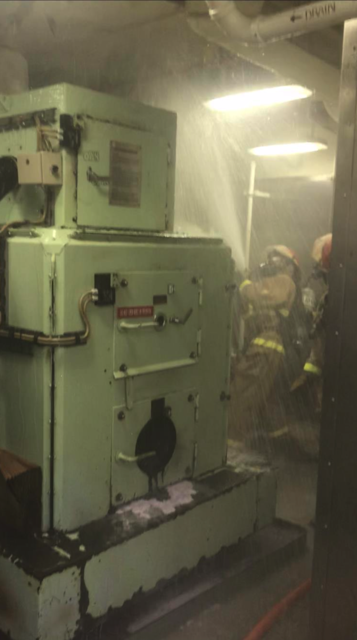The only working US heavy icebreaker catches fire returning from Antarctica
It could be another decade before the 43-year-old polar vessel has a replacement.

The crew of the Polar Star, the only operable U.S. heavy polar icebreaker, had completed this season’s annual resupply mission to Antarctica despite a bevy of difficulties: an electrical system began smoking, one of two evaporators used for making drinking water broke, a shaft on the propeller began leaking, and there were ship-wide power outages.
After resupplying McMurdo Station, the Polar Star began her 11,200-mile journey back to the dry dock in Seattle.
But she only made it about 650 miles north of McMurdo Sound before another incident struck.
At 9 pm on Feb. 10, a fire broke out in the incinerator room. The crew tried to put it out with four fire extinguishers, but that didn’t work. Fire crews continued battling the blaze for nearly two hours before they were able to put it out. No one was injured.
Although damage from the fire itself was limited to the incinerator, firefighters had to cool down an exhaust pipe with water, which damaged electrical systems and insulation in the incinerator room. The cause of the fire is still being investigated.
“It’s always a serious matter whenever a shipboard fire breaks out at sea, and it’s even more concerning when that ship is in one of the most remote places on Earth,” said Vice Adm. Linda Fagan, commander of the U.S. Coast Guard’s Pacific Area, in a statement. “The crew of the Polar Star did an outstanding job — their expert response and determination ensured the safety of everyone aboard.”
The 150-member crew of the Polar Star broke through nearly 17 miles of ice to open up McMurdo Sound. On January 30, the icebreaker escorted a container ship with 10 million pounds of goods to resupply McMurdo Station, Amundsen-Scott South Pole Station and other U.S. field camps.
After refueling at McMurdo Station, the ship began the long journey back to its home port, where she spends most of the year being repaired in anticipation of next year’s Antarctic mission.
The fire broke out soon after.
Four days later, on Feb. 14, Congress passed an omnibus spending bill and President Trump signed it into law. The bill included funding for a new heavy icebreaker, now officially called a polar security cutter.
But it may be years before the new vessel is operational.
The Coast Guard plans to have its new icebreaker — the first to be built in two decades — in the water by 2023. But that’s more of an aspirational goal, observers say, because that is when the Polar Star is expected to cease functioning. The 43-year-old ship completed a ten-year service-life extension in 2013 to prolong its operability to 2023.
“The Coast Guard’s planned delivery dates were not informed by a realistic assessment of shipbuilding activities, but rather driven by the potential gap in icebreaking capabilities once the Coast Guard’s only operating heavy polar icebreaker—the Polar Star —reaches the end of its service life,” wrote the Government Accountability Office in a 2018 report.
“The lead time on these cutters is a very long time,” Alaska Sen. Lisa Murkowski told ArcticToday. “It may be 10 years before we see it in the water.”
Meanwhile, the Polar Star “will be at the end of her useful life — probably past the end of her useful life.” Murkowski said.
“We’ve already rehabbed her once. Now they want to know what it’s going to take in order to extend it once again,” she said. “I think that’s throwing good money after bad.”
Although Murkowski has long advocated for more icebreakers in the Arctic, it’s very likely that the first heavy icebreaker would instead take on the Antarctic resupply mission currently undertaken by the aging Polar Star, she said.
“In order to keep up the contract we have down in McMurdo, we’re going to see this vessel down in the South Pole and not at the North Pole,” she said. “So you still haven’t responded to the need” in the Arctic.
After leaving Antarctica, the Polar Star stopped in New Zealand for a port call before continuing on to Seattle, the Coast Guard said in a statement. Plans are already underway to repair the incinerator and other faulty parts before next year’s journey.

